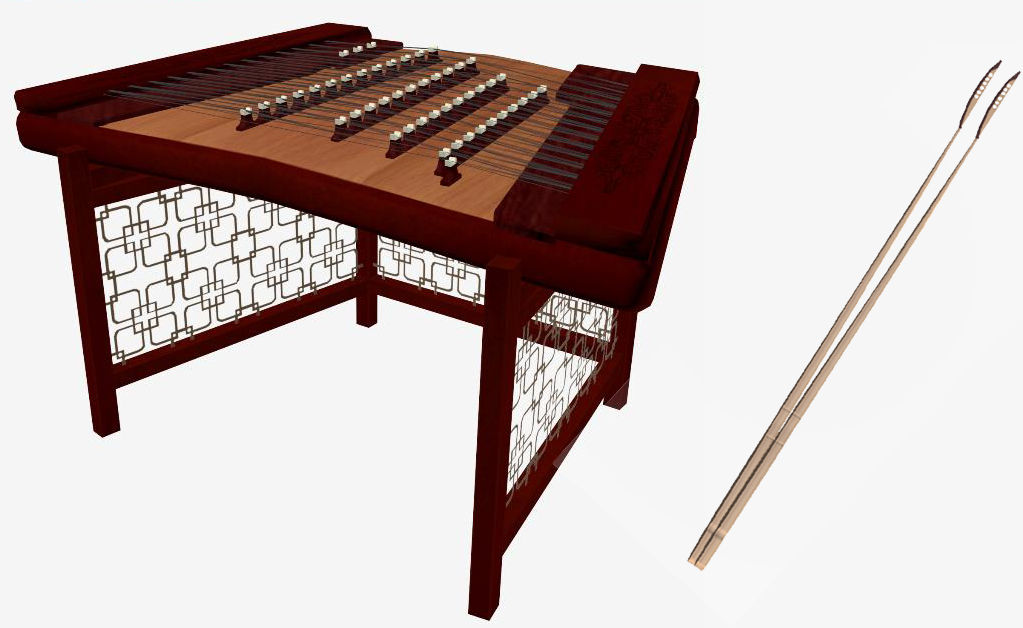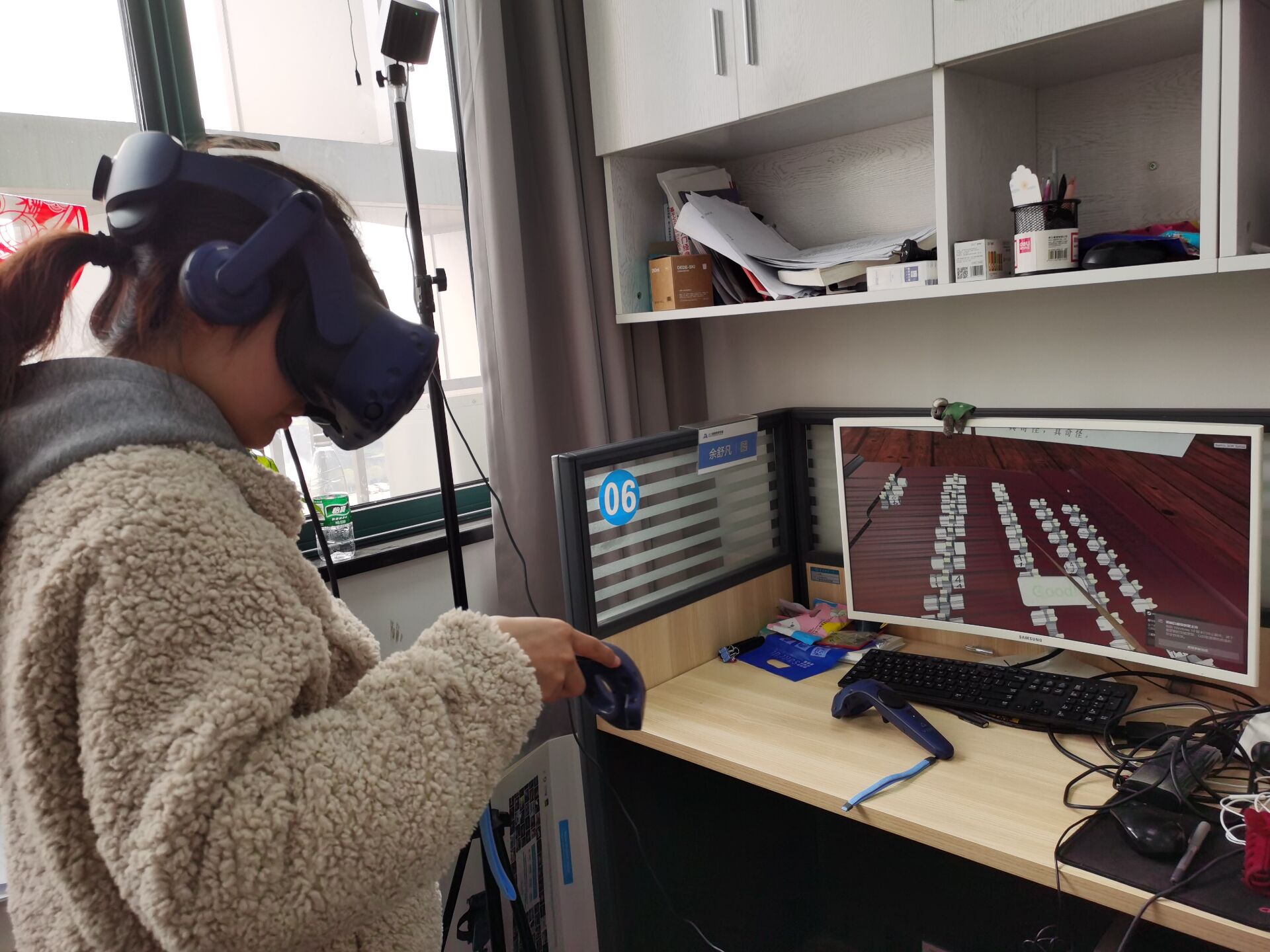1️⃣ Yangqin (Chinese dulcimer) 
In this research, we introduced a VR-based dulcimer learning system designed to teach students the basic knowledge of the yangqin (Chinese dulcimer) and help them master the fundamental skills of playing it.
In the experiment, we investigated the feasibility and efficacy of the embodied design (low and high level of embodiment; LoEmb and HiEmb) and visual cues (low and high level of visual cues; LoViz and HiViz) on students’ yangqin learning.
Results showed that the LoEmb design benefited students’ completion rate, the HiViz improved students’ playing rhythmic accuracy. Both LoEmb and HiViz decreased students’ playing errors and improved their overall performance. Moreover, the HiViz and HiEmb designs had a combined effect on reducing students’ cognitive load and improving the instructional efficiency of learning material.
Publications:
- Promoting musical instrument learning in virtual reality environment: Effects of embodiment and visual cues
Shufan Yu*, Qingtang Liu, Mina C. Johnson-Glenberg, Miaomiao Han, Jingjing Ma, Shen Ba, Linjing Wu
Computers & Education , 198, 104764. (2023)


